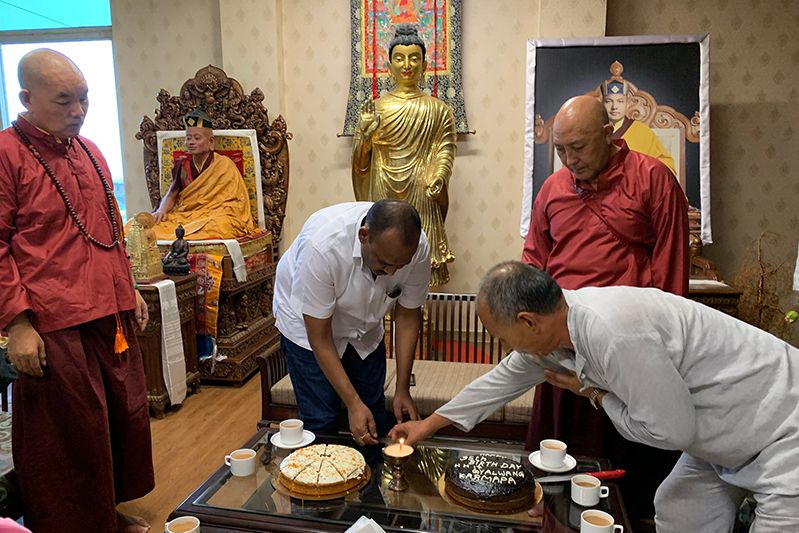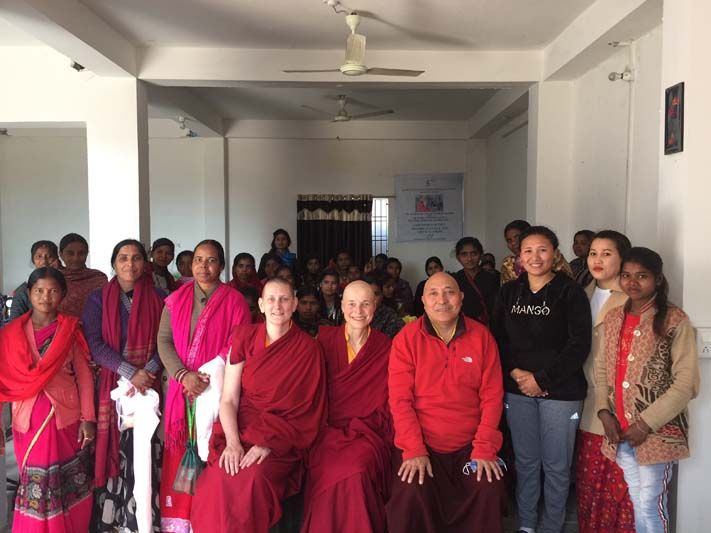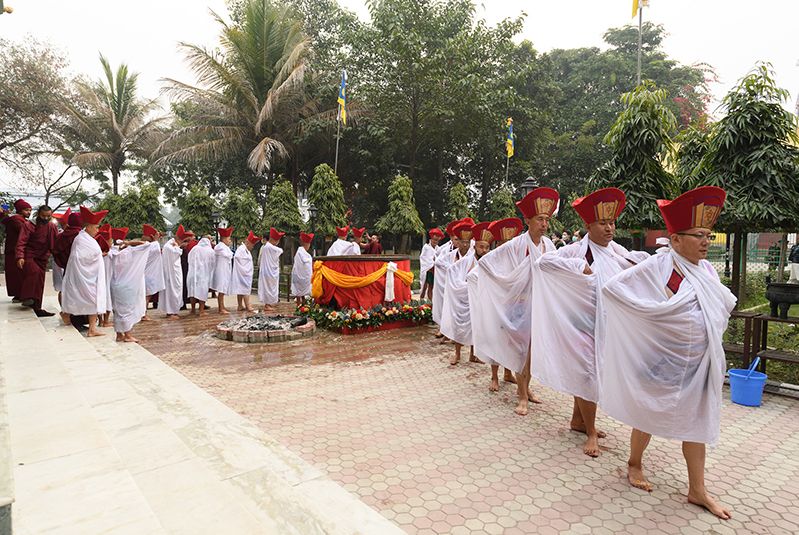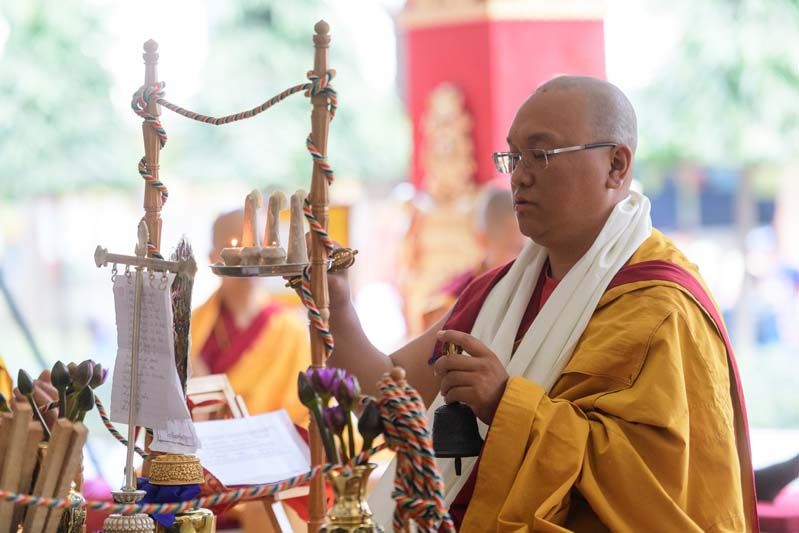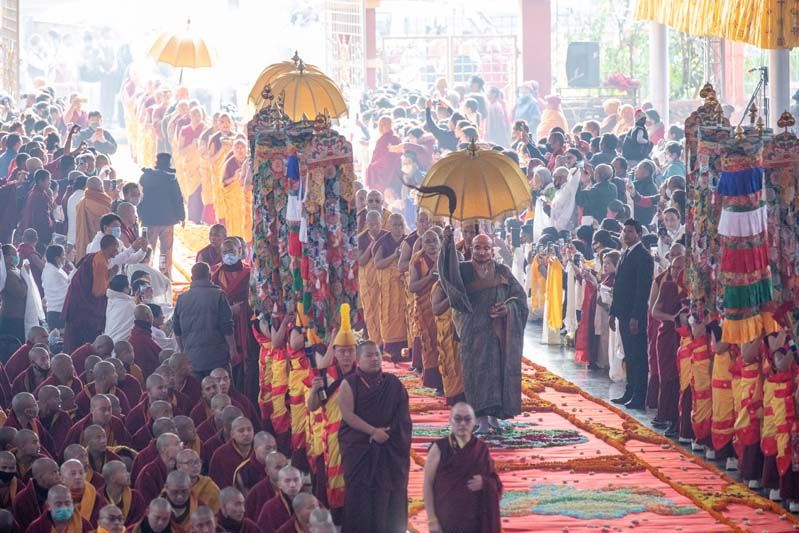Sixteen Arhats Procession and Alms Offering Photo story
- March 3, 2018
Leading the sixteen-arhat procession were the gyaling players, followed by victory banners and parasols, and then the incense bearers. Each arhat was accompanied by a parasol bearer in similar dress. In their beautiful robes designed by a famous Chinese costume maker, the arhats were regal and magnificent. The monastics held begging bowls in precise style: left hand under the bowl, right hand resting on the rim of the bowl. They looked down or straight ahead, chanting mantras and walking meditatively. Finally, a carriage conveyed the standing Buddha, gleaming in the early morning sun, a parasol swirling just above its head. The entire procession turned into the pavilion and processed down the aisle. Patrons offered baskets brimming with fruit, nuts, and other delicacies. Then, as the assembly chanted Prostrations and Offering to the Sixteen Arhats, followed by praises and auspicious prayers, each lay devotee had the precious opportunity to make offerings. The pavilion was packed, and for about an hour, the young dharmapalas from Bhutan patiently directed a stream of people.

1. White, pink and deep orange petals radiated glorious color in these sacred images.

2. In their beautiful robes designed by a famous Chinese costume maker, the arhats were regal and magnificent.

3. First came the gyaling players, followed by victory banners and parasols, and then the incense bearers.

4. Each arhat was accompanied by a parasol bearer in similar dress.

5. Their masks, made to reflect the character of each arhat according to His Holiness Karmapa’s painting, made them seem larger than life.

6. Each arhat was followed by his retinue, in the form of the gelongs and gelongmas, the number of monastics representing the correct number in the retinue according to the Kagyu Monlam text.

7. They turned slowly from side to side as they walked, displaying their hand symbols, indicative of their activity, to the waiting spectators.

8. The assembled devotees held up their khatas and chanted “Namo Shakyamunaye” as the procession passed in stately and dignified silence.

9. They looked down or straight ahead, chanting mantras and walking meditatively.

10. The wide central aisle with its red carpet was strewn with flower petals. Garlands of orange and gold marigolds arranged as scrollwork framed the central medallions representing the eight auspicious symbols: the parasol, golden fish, vase, utpala flower, conch, glorious knot, victory banner, and eight spoked wheel.

11. Sacred symbols were outlined in marigold garlands; as the devotees waited, monks came through with fresh flowers to fill in these outlines.

12. The entire procession turned into the pavilion and processed down the aisle.

13. The procession was orderly and joyful.

14. Finally, a carriage conveyed the standing Buddha, gleaming in the early morning sun, a parasol swirling just above its head.

15. The assembly chanted an invitation to the buddhas while the golden statue was placed in the pavilion. The arhats were seated, and the gelongs and gelongmas were arrayed on the tiers of the stage behind and to the sides.

16. Each devotee had the precious opportunity to make offerings.
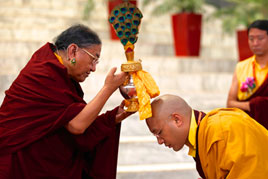
37th Kagyu Monlam Schedule
Tibetan / English / Chinese • French • German • Indonesian • Korean • Polish • Russian • Spanish • Vietnamese
Dharma Teachings
 Meditation Instructions
Meditation Instructions
Recorded during the 37th Kagyu Monlam, Bodhgaya, India. January 28-30, 2020.

